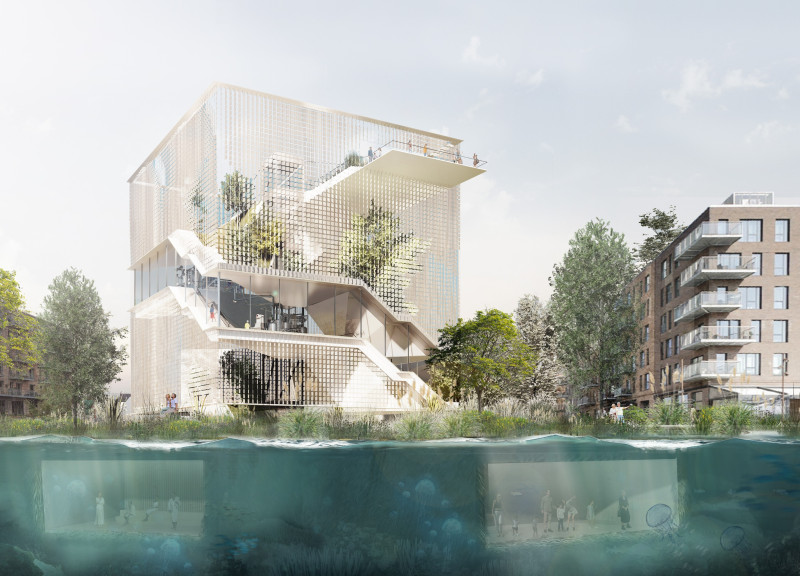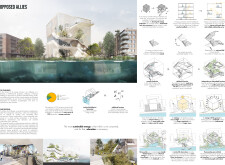5 key facts about this project
### Overview and Context
"Opposed Allies" is located in the Nordhavn district of Copenhagen, known for its commitment to sustainability and modern urban living. The project integrates educational facilities with a technical energy production hub, creating a multifunctional building that addresses contemporary energy challenges while serving the local community. Through the utilization of renewable energy sources, the design seeks to reduce CO2 emissions and promote awareness surrounding sustainability practices.
### Spatial Strategy and Community Engagement
The architectural layout features a dynamic interplay of volumes designed to create multifunctional spaces, accommodating both technical areas for energy production and educational spaces for communal use. Elevated observation decks provide expansive views and serve as platforms for educational programs on sustainability. Additionally, the inclusion of public green spaces fosters social interaction and strengthens the connection between the building and its natural surroundings. These communal areas are intended to nurture community engagement, demonstrating a commitment to integrating shared spaces into the urban fabric.
### Material Selection and Sustainability
The project prioritizes sustainability in its material choices, featuring reinforced concrete for structural integrity and durability, extensive glazing to enhance natural light and energy efficiency, and mesh facade panels designed for airflow and shading. Green roof systems are incorporated to promote biodiversity and manage rainwater, in addition to providing insulation. Each selected material contributes not only to the building's performance but also to creating an inviting environment that enhances user experience.
The design effectively integrates energy production systems, including strategically placed solar panels and a kinetic facade that harnesses wind energy, while facilitating direct engagement with sustainable practices for visitors. Through this approach, the building serves both as a functional structure and an educational resource, fostering a culture of renewable energy awareness and responsible consumption within the community.



















































